|
April 8, 2004
Photos by William Henry Jackson One of Wabash's greatest archival treasures helped the nation preserve a treasure of its own. The College has a collection of 123 original photographs taken by William Henry Jackson between 1869 and 1873. Mostly landscapes, the collection includes a handful of images of Native Americans taken just ahead of the western migration of homesteadersÑ they are photographs of a people on the verge of cataclysmic change. A number of the photographs show the Yellowstone region, taken when Jackson accompanied U.S. Geological Survey chief Ferdinand Hayden on an exhaustive exploration of the area. Hayden had heard a lecture by Nathaniel Washburn, leader of an expedition to Yellowstone in 1870. Washburn returned with the then-novel belief that this land should be set aside to keep it wild. Hayden was intrigued and he determined he would mount his own expedition. He knew a visual record would be crucial, and he'd been impressed with Jackson's previous work. He also knew that the illustrations accompanying Washburn's report were thought of as artistic exaggerations. Jackson's photographs would be objective, scientific, and seen as impartial. Setting out in the summer of 1871, members of the Hayden Expedition were amazed at what they found at the headwaters of the Yellowstone. Hayden returned to Washington determined to convince Congress to designate Yellowstone a national park. He hurriedly finished his reports to that end, proclaiming the wonders he had seen. But he needed real proof. He called in Jackson to provide the visual ammunition, and Jackson produced enough of his Yellowstone shots so that on the day of the final vote, each senator had a complete set on his desk. On January 30, 1872, the Senate passed the bill, and it is widely held that Jackson's photographs were chief among the deciding factors. The prints that William Henry Jackson made from his glass negatives gave voice to this land. No one who saw these photos could doubt that this was a place worthy of preservation. | 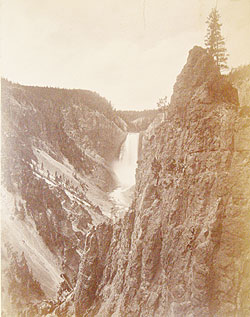
One of many photographs of the Grand Canyon of the Yellowstone, taken on the 1871 survey.
| 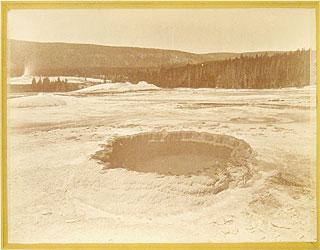
An 1871 shot of Hot Springs Basin. A geyser can be seen erupting in the distance.
| | 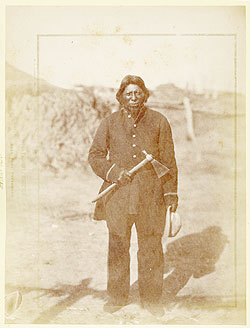
Jackson's photos of Native Americans usually show them with their weapons prominently displayed. These shots were best-sellers in the East
| 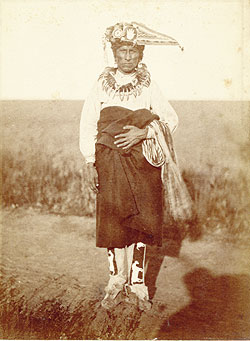
G-Ne-Ga, an Omega chief, wears ceremonial dress in this 1868 photograph.
| 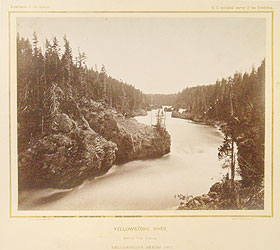
The Yellowstone River above the falls, 1871. The foamy appearance of the water is the result of a long exposure time - typically 15 seconds.
|